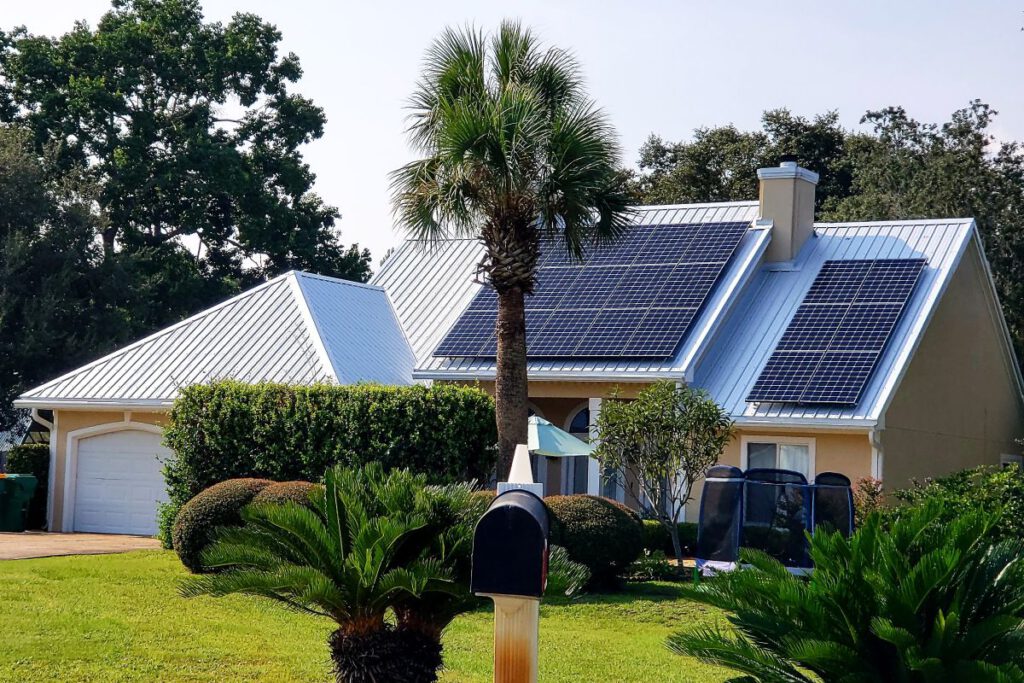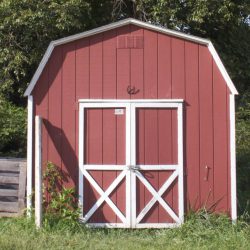Palm trees are beautiful plants that symbolise sun, sea and sand for many people all around the world.
Having palm trees in your garden can help to make it feel more like a holiday hotspot, but they are a fantastic choice for so many other reasons as well. They are useful in areas with high wind, and can provide shade, fruit and more.
But which of these trees can you find in Australia? And how can you avoid mistakes when caring for your palm trees? Read on to find out more about these incredible additions to your garden…
How do you care for palm trees?
Exactly how to care for your palm tree can vary depending on the species that you have. For instance, some palm trees need a location with full sun to thrive, while others will need partial shade if you want them to do the same. If you aren’t sure what palm tree you have, you can always consult a qualified arborist for help and advice.

In general, caring for palm trees involves the following steps:
- Plant your tree in moist, loose and well-drained soil
- Ensure that the soil is rich in nutrients and that it is suitable for your type of palm tree
- For the first 6 months, you will need to water the plant deeply twice a week
- After that, water once a month or less as needed
- Fertilise occasionally, especially in the early spring to give plenty of iron, zinc and manganese
- Do not over-prune, only remove dead or dying fronds
As you can see, the general care of a palm tree can be fairly straightforward if you don’t have any issues. If you do, such as finding yourself with a tree that is diseased, dying or needs to go, you should consult a qualified arborist for help with palm tree removal or care.
Maintenance mistakes: What not to do with a palm tree?
Now that you know how you should care for your palm tree in general, it is important to know what not to do with your palm tree as well. Here are some common mistakes that people make when caring for their palm trees, to help you see how to avoid them in the future:

- Don’t treat all trees the same – all trees require different care, and there are many species of palm tree in Australia that thrive under different conditions. It is important that you know what tree you have so you know if it hates the cold, loves water, or is quite the opposite.
- Don’t overwater – most palm trees need good drainage to be at their best. Over-watering can cause leaves to go brown and drop off. When you see this, stop watering so much.
- Don’t forget to water your palm tree – conversely, many people fail to water their trees enough. Palm trees need moist, well-drained soil.
- Don’t damage the roots – palm tree roots are fragile, and even fertiliser can cause harm if it is placed too close to the roots. Make sure you take good care of them or your plant will die.
- Don’t under-fertilise – palm trees need plenty of nutrients, and if the soil doesn’t contain all they need then you need to supply it for them.
- Don’t plant your palm tree in the wrong location – different palm trees like different climates. There is no point in planting a tropical weather-loving palm tree somewhere cold. Do your research and pick a different tree.
- Don’t over-prune – one of the biggest and most common mistakes that people make with their palm trees is to over-prune them. Palm trees actually only need light pruning, and you really only need to do anything more drastic if your palm tree has fronds that are dead or dying.
What palm tree species are common in Australia?
Out of the more than 2500 palm tree species in the world, more than 50 varieties are found here in Australia. Many of these vary wildly in terms of height, frond patterns and more, and they can require slightly different types of care in order to thrive. Some of the most popular palm tree species that are common in Australia include:

- The Alexandra Palm – this can grow to 30 metres in the right conditions, but tends to be smaller in your garden. It produces gorgeous white flowers and red fruits, and has long, feather-like fronds.
- Australian Cabbage Tree Palm – a hardier palm well-suited to strong winds and other weather, this tree can grow to 25 metres and does well on the coast with moist soil.
- The Australian Fan Palm – native to northern Queensland, this palm is known for its incredible near-circular fronds. It can be kept in a pot, but in the ground it can eventually reach 15 metres tall.
- Bungalow Palm – this palm is popular with birds due to its violet flowers and red fruits. It has a thinner trunk than the Alexandra Palm and requires more regular watering in dry weather.
- The Chinese Windmill – hardy in cold weather, this beautiful palm boasts fan-like fronds and is perfect for your garden at 7 metres tall.
- Coconut Palm – one of the most recognisable palm trees, the Coconut Palm can also be found in Queensland and in tropical areas as it cannot stand the cold.
- The European Fan Palm – this extremely popular palm is hardy when it comes to cold weather and can often be found in gardens and courtyards.
- The Golden Cane Palm – this palm tree boasts stunning gold-green leaves and is hugely popular as a landscaping plant. It is great for screening and as a windbreak, and is useful as well as beautiful.
- The Parlour Palm – a dwarf species that grows to around 2 metres, this palm can tolerate and indeed can prefer shade making it an ideal plant to have in your home. In the garden, plant it in the shade and watch it thrive.
Final thoughts
As you can see, there are many different species of palm trees to discover in Australia, with different fronds, flowers and fruit, and that thrive in varying temperatures and conditions. If you have questions about how to care for your palm tree, or if you are thinking about planting one in your garden, don’t make fall for these common mistakes. Call a qualified arborist for help and advice today.

















